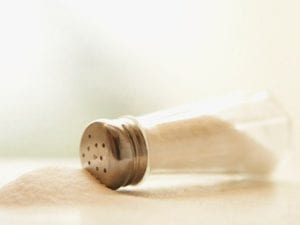 In the same way asthmatics use rescue inhalers to reduce bronchial issues a new product may allow similar assistance for the symptoms of diabetes.
In the same way asthmatics use rescue inhalers to reduce bronchial issues a new product may allow similar assistance for the symptoms of diabetes.
According to WebMD, Inhaled insulin proved to be as effective at lowering blood sugar levels as standard insulin injection treatment, and with minimal side effects, among patients with uncontrolled type 2 diabetes.
“Reporting in this week’s American Diabetes Association meeting and in The Lancet, researchers compared two approaches to managing type 2 diabetes among patients ages 18 to 80 from 10 different countries. The patients were nonsmokers and had poor control of blood sugar despite insulin therapy.”
There were just over 200 participants in this experimental distribution method while a slightly higher number of patients in the control group received standard diabetic treatment. At the end of the one-year study there were several findings that may be of interest to those living with diabetes.
- Blood sugar levels were similar in the two groups; 22% of patients in the inhaled insulin/insulin glargine group reached a goal A1c level of 7% or less while 27% of those solely on insulin injections reached the goal.
- Patients using the inhaler gained less weight — a major concern among diabetes patients. The inhaler group gained only an average of about 2 pounds, whereas the control group gained an average of about 5.5 pounds.
- Patients using the inhaler had fewer episodes of hypoglycemia — a sudden drop in blood sugar — than those in the comparison group, occurring in 31% of patients on inhaled insulin/insulin glargine group vs. 49% of those in the insulin injection group.
- Patients using the inhaler reported more side effects with coughing and upper respiratory infections. Most of the coughing occurred within the first 10 minutes of inhalation and primarily during the first week of treatment and declined as treatment continued.
- Prior use of metformin, an oral drug commonly taken to manage blood sugar, did not affect results among the two groups of patients. (Source: WebMD)
Of particular interest is the fact that blood sugar was controlled more tightly when the inhaled insulin was used. Weight gain was less problematic with the inhaled insulin and hypoglycemia incidence was reduced.
On the other hand there were the side effects that caused some patients initial problems although it was noted those symptoms subsided following regular use.
WebMD quotes researcher Julio Rosenstock, MD as saying “Our findings show that inhaled insulin plus insulin glargine, alone or in combination with an oral antidiabetes drug such as metformin, is an effective alternative to conventional insulin therapy (biaspart insulin) in uncontrolled type 2 diabetes.”
In an effort to provide full disclosure WebMD further reported, “This research was funded by MannKind Corp., a California-based bio-pharmaceutical company that manufactures Technosphere, the inhaler device used to deliver the insulin in this study. MannKind is using Technosphere to administer an inhaled insulin drug called Afreszza, which has not yet been approved by the FDA.”
The primary voice of caution in this case has to do with the side effects of respiratory discomfort. Some in the field of medical science are concerned about the effects of this new distribution method on miniature air sacs in the lungs known as alveoli.
It’s a safe bet that more tests will follow to help determine if the findings can be replicated and to learn more about the potential side effects and how they may ultimately influence those who may choose to use this product should it become available.
 The Centers for Disease Control (CDC) suggests that a better understanding of what prediabetes is could help prevent the expansion of diabetes. Knowing what leads to diabetes can be a powerful tool of disease avoidance.
The Centers for Disease Control (CDC) suggests that a better understanding of what prediabetes is could help prevent the expansion of diabetes. Knowing what leads to diabetes can be a powerful tool of disease avoidance. Table salt has been linked to
Table salt has been linked to  Ingredients
Ingredients